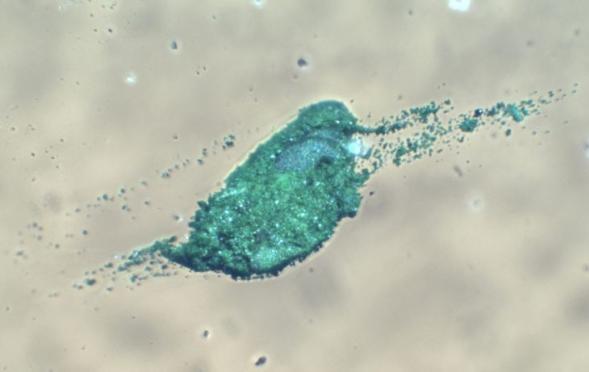Defect of the Month
Back to AGR's Library
Percussion Cones also known as Bruises are usually caused by mechanical damage with the source mechanism being a blunt, hard object pressed into the surface under perpendicular directed force. They are strength reducing flaws. As the radius of contact area decreases both the stress level and potential for damage increases. A percussion cone is usually identified by the form of circular ring cracks and crushed glass often on the outside surface near the center of the circle.

This summer in Western Pennsylvania we have had to contend with mosquitos, flies, bees, hornets, and now these flying bugs. The bug-like inclusion shown here is a common crystalline devitrification stone called Beta Wollastonite. Wollastonite is composed of calcium silicate and will form in cooler areas of the furnace and forehearth. It typically crystallizes into large prisms that produce vivid retardation colors in polarized light.

This sea green stone actually started as a grass-green colorant. Chromic oxide, is a batch additive used to make green glass. It can form inclusions due to insufficient melting or mixing. Excessive moisture or humidity may have caused it to agglomerate. Chromic oxide stones are difficult to melt and therefore should not be returned to the cullet supply.

In the Kingdom of the Crystal Skull, Indiana Jones used (real) giant desert drawings to locate the (fictional) city of Akator. The unusual markings at the fracture origin shown here bear an eerie resemblance to the drawings created by the Nazcas, and are similarly shrouded in mystery. This particular origin was found at the inside knuckle of a glass container along with embedded material. Elemental analysis showed that the metal particulate was composed primarily of nickel and iron, likely caused by degradation of the plunger.
Pagination
- Previous page
- Page 13
- Next page